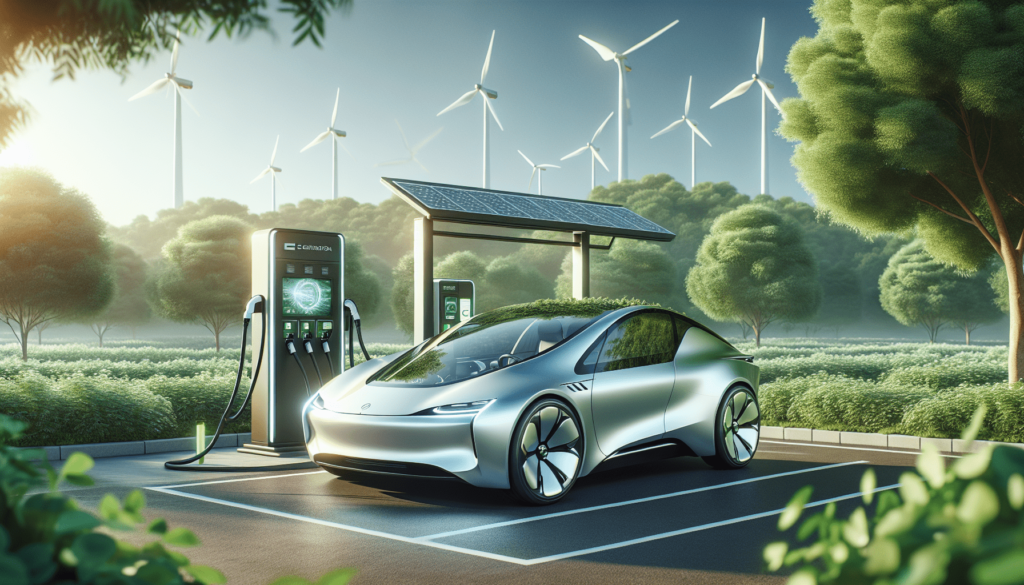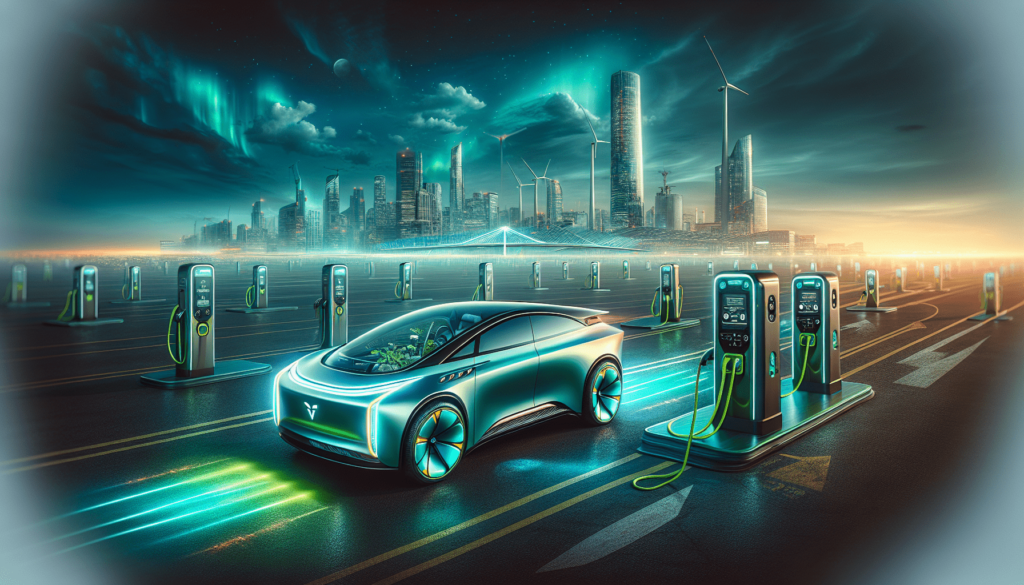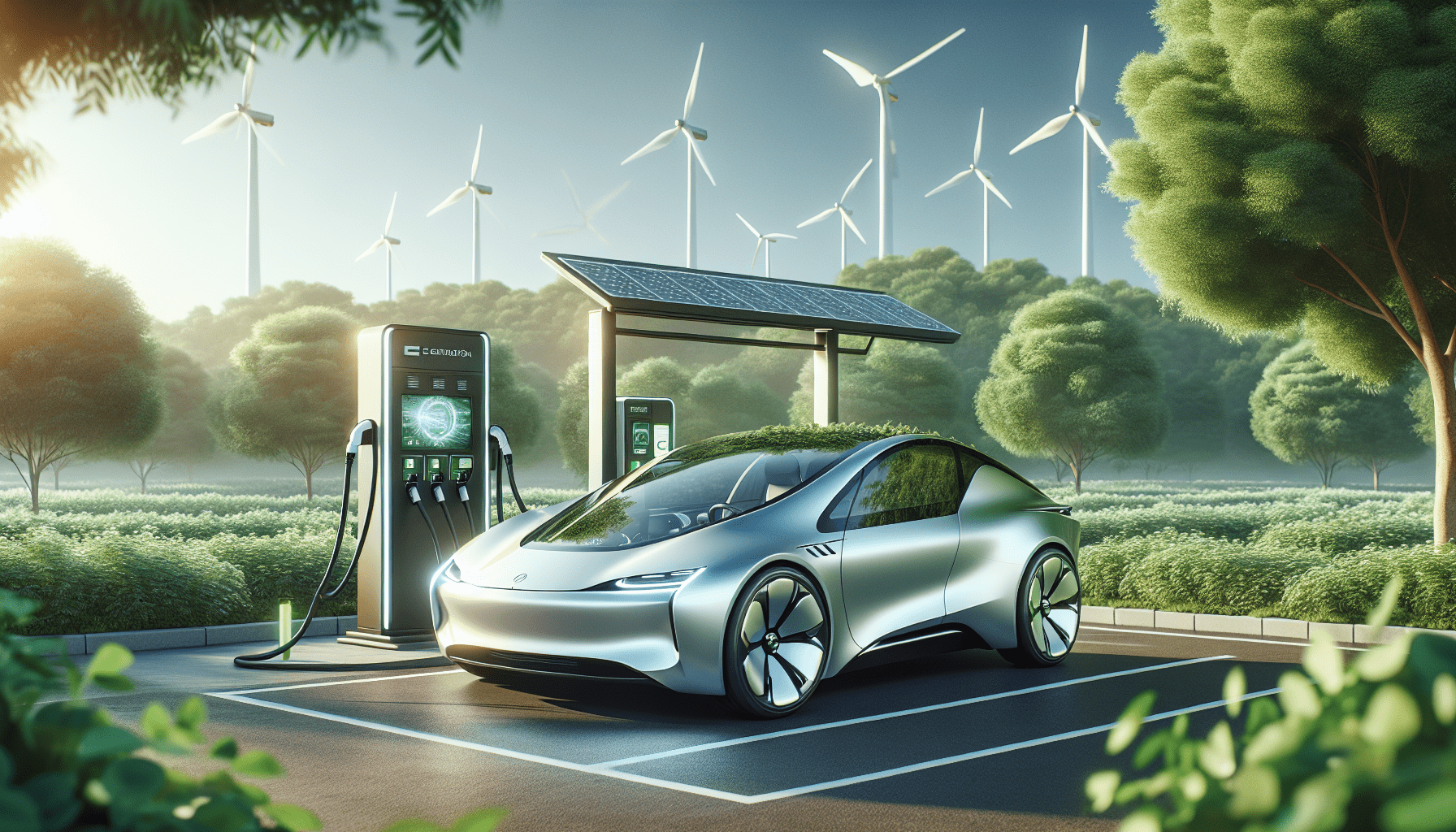Welcome to an exciting glimpse into the future of transportation! In this article, we will explore the latest green technology innovations that are revolutionizing the way we travel. From electric vehicles to hyperloop trains, the possibilities for a more sustainable and efficient transportation system are endless. Join us as we dive into the cutting-edge advancements that are shaping the future of green tech in transportation.
The Future of Green Tech Innovations in Transportation
Have you ever wondered what the future holds for the transportation industry when it comes to green technology? With the rise in awareness of climate change and the need for sustainable solutions, advancements in green tech innovations are transforming the way we travel. In this article, we will explore the latest trends and future possibilities in green tech for transportation.
The Shift to Electric Vehicles
You may have already noticed the increasing number of electric vehicles (EVs) on the roads today. Electric cars are becoming more popular due to their environmental benefits and cost savings in the long run. The shift towards EVs is driven by the desire to reduce greenhouse gas emissions and dependency on fossil fuels.
Advantages of Electric Vehicles
Electric vehicles offer numerous benefits over traditional gasoline-powered cars. They are environmentally friendly, producing zero tailpipe emissions, which helps reduce air pollution and combat climate change. EVs are also cheaper to operate and maintain, saving you money on fuel and maintenance costs in the long term.
The Rise of Charging Infrastructure
One of the main challenges for widespread adoption of electric vehicles is the lack of charging infrastructure. However, significant investments are being made in expanding charging stations across the country to support the growing number of EVs on the road. With fast-charging technology, EV owners can recharge their vehicles quickly and conveniently.
Autonomous Vehicles and Shared Mobility
The future of transportation is not only electric but also autonomous and shared. Autonomous vehicles (AVs) are self-driving cars that use sensors and artificial intelligence to navigate roads without human intervention. Shared mobility services, such as ride-sharing and car-sharing, are also gaining popularity as a more sustainable and cost-effective way to travel.

Benefits of Autonomous Vehicles
Autonomous vehicles have the potential to revolutionize the transportation industry by improving safety, reducing traffic congestion, and increasing efficiency. AVs can communicate with each other and traffic management systems to optimize routes and minimize travel time. They also have the potential to make transportation more accessible to individuals with disabilities or limited mobility.
Challenges of Autonomous Vehicles
Despite the promising benefits of autonomous vehicles, there are still challenges that need to be addressed before widespread adoption. Safety concerns, cybersecurity risks, and regulatory issues are some of the obstacles that need to be overcome. Additionally, the transition to fully autonomous vehicles will require significant investments in infrastructure and technology.
Sustainable Aviation Solutions
While electric vehicles are making strides on the ground, the aviation industry is also exploring sustainable solutions to reduce its environmental impact. Electric planes, biofuels, and hydrogen-powered aircraft are some of the innovations being developed to make air travel more eco-friendly.
Electric Planes
Electric planes are an emerging technology that has the potential to revolutionize the aviation industry. These aircraft use electric propulsion systems instead of traditional jet engines, reducing greenhouse gas emissions and noise pollution. Electric planes are currently being developed for short-haul flights and could pave the way for a greener future of air travel.

Biofuels and Sustainable Aviation Fuels
Biofuels and sustainable aviation fuels (SAFs) are alternative fuels made from renewable sources such as plants, algae, and waste materials. These fuels have lower carbon emissions compared to traditional jet fuels and can help reduce the environmental impact of air travel. Airlines are increasingly using biofuels and SAFs to meet regulatory requirements and reduce their carbon footprint.
Hydrogen-Powered Aircraft
Hydrogen-powered aircraft are another innovative solution to decarbonize the aviation industry. These aircraft use hydrogen fuel cells to generate electricity, producing water vapor as the only emission. Hydrogen-powered aircraft have the potential to eliminate greenhouse gas emissions and reduce the reliance on fossil fuels in aviation.
High-Speed Rail and Hyperloop Technology
In addition to electric vehicles and sustainable aviation solutions, high-speed rail and hyperloop technology are reshaping the future of transportation. High-speed rail systems offer fast and efficient travel between urban centers, reducing the need for short-haul flights and highway congestion. Hyperloop technology, on the other hand, proposes a new mode of transportation that uses vacuum tubes to transport passengers and cargo at high speeds.
Benefits of High-Speed Rail
High-speed rail systems provide numerous benefits, including reduced travel time, lower carbon emissions, and increased connectivity between cities. High-speed trains are energy-efficient and can accommodate a large number of passengers, making them a sustainable alternative to air travel for short to medium-distance trips.
Hyperloop Technology
Hyperloop technology is a conceptual high-speed transportation system that could revolutionize long-distance travel. Hyperloop pods travel through vacuum tubes at speeds exceeding 600 mph, offering a faster and more sustainable mode of transportation. Hyperloop systems have the potential to reduce travel time, alleviate traffic congestion, and lower greenhouse gas emissions.
Green Infrastructure and Smart Cities
As green tech innovations in transportation continue to evolve, the need for sustainable infrastructure and smart city initiatives becomes increasingly important. Green infrastructure, such as bike lanes, electric vehicle charging stations, and pedestrian-friendly designs, can help reduce carbon emissions and promote active transportation. Smart cities leverage technology to optimize transportation systems, reduce energy consumption, and enhance the quality of life for residents.
Benefits of Green Infrastructure
Green infrastructure plays a crucial role in promoting sustainable transportation options and reducing the environmental impact of urban areas. By investing in bike lanes, walking paths, and public transportation systems, cities can encourage active transportation and reduce reliance on cars. Green infrastructure also helps improve air quality, reduce noise pollution, and create more livable communities for residents.
Smart City Initiatives
Smart city initiatives integrate technology into urban planning to create efficient and sustainable transportation systems. By using sensors, data analytics, and real-time monitoring, cities can optimize traffic flow, reduce congestion, and improve safety on the roads. Smart city solutions, such as intelligent traffic lights, connected vehicles, and autonomous shuttles, have the potential to transform the way we travel in urban areas.
Conclusion
The future of transportation is undergoing a green revolution, with innovative technologies and sustainable solutions shaping the way we travel. From electric vehicles and autonomous cars to sustainable aviation and high-speed rail, green tech innovations are driving toward a more sustainable and efficient transportation system. By embracing green technology and investing in sustainable infrastructure, we can create a greener and more sustainable future for transportation. So, are you ready to join the green transportation revolution and be a part of the future of green tech innovations in transportation?

